Mueller GlacierMueller Glacier is a long, narrow, debris-covered glacier that lies between the Main
Divide and the Sealy Range. It flows northeastwards for most of its length, turning
sharply below Mount Sefton (3151 m) and heading southeastwards, a total length of
approximately 12 km. Its area is 16 km2, and it has an estimated mean depth of 67 m.
The majority of the glacierís accumulation derives from ice and rock avalanches,
from the Main Divide, although a number of steeply graded glaciers descend from
Mount Burns (2746 m) at the head of the main glacier tongue, and from Mount
Sefton. Like its nearest neighbour, the Hooker Glacier, it has a low-gradient, debris-mantled
tongue that terminates in a proglacial lake; growth of this lake has accelerated in
recent years and much of the tongue appears to be underwater. However, iceberg
production is generally low and the calving cliff relatively small.
|
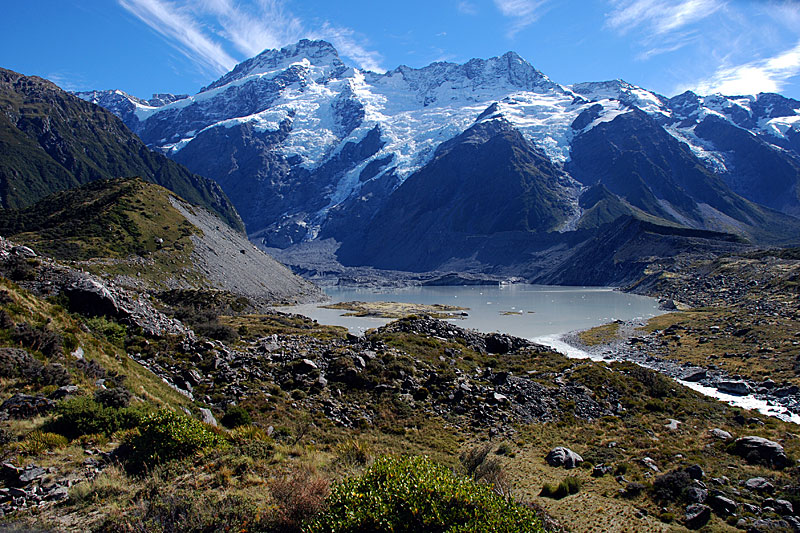 Mueller Glacier and its proglacial lake with Mount Sefton
(3151 m). This mountain has a fine suite of
hanging glaciers, one of which can be seen joining the main glacier tongue,
while the others supply the tongue via ice and rock avalanches. Note
Little Ice Age moraineson both sides of the lake. (April 2008).
| 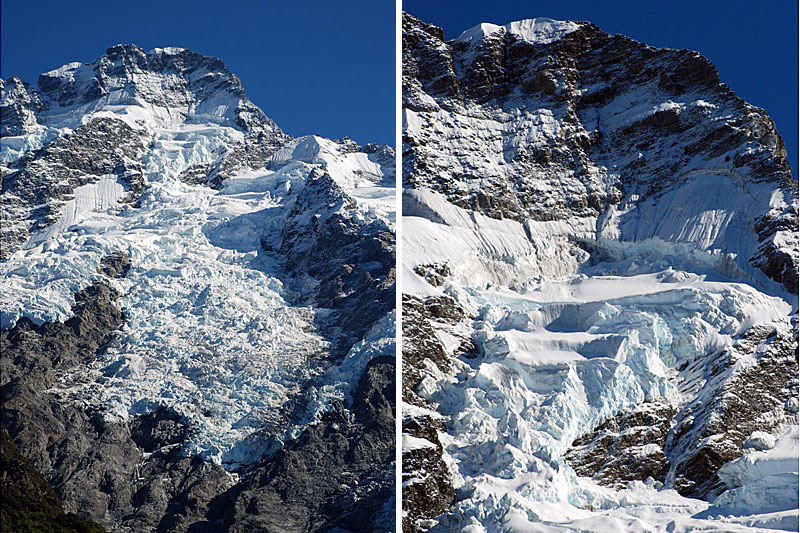 Two telephoto shots of Mount Sefton summit, illustrating bergschrunds and
the heavily crevassed nature of the steep Tuckett Glacier. The right hand
image zooms in on the summit area (April 2008). | 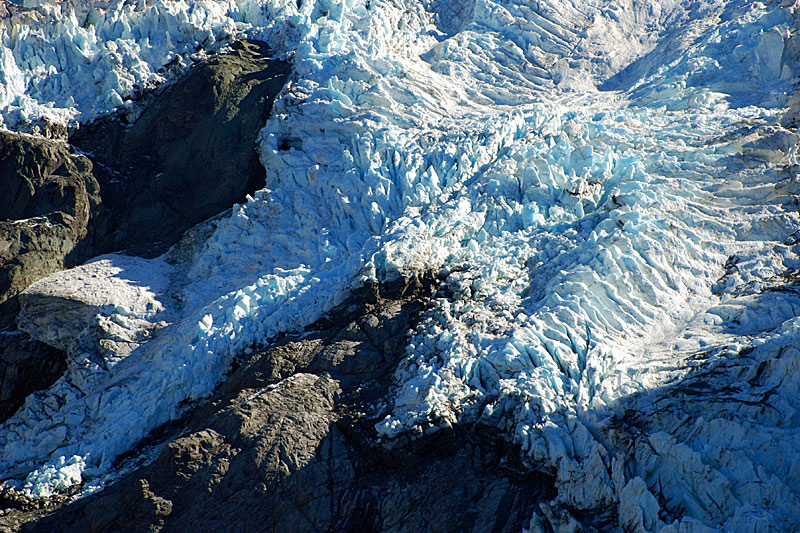 Telephoto view of the regular ice margin of heavily crevassed Huddleston
Glacier on Mount Sefton. Frequent ice avalanches fall several hundred metres
from these steeply graded slopes onto Mueller Glacier tongue (April 2008).
| 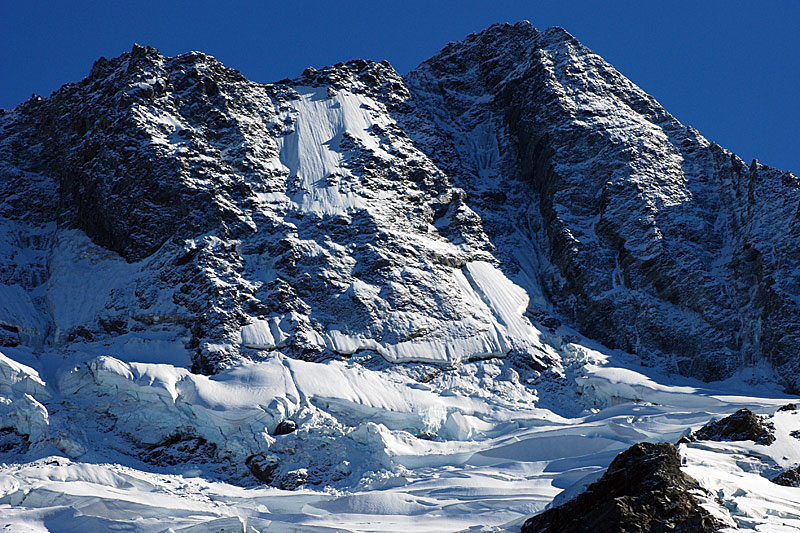 Telephoto view of ice aprons with flutes caused by falling rocks, and hanging
glaciers forming part of the Huddleston Glacier. The ridge here is The
Footstool (2764 m). Note that the ice walls clearly reveal the snow/firn
stratification (April 2008).
|
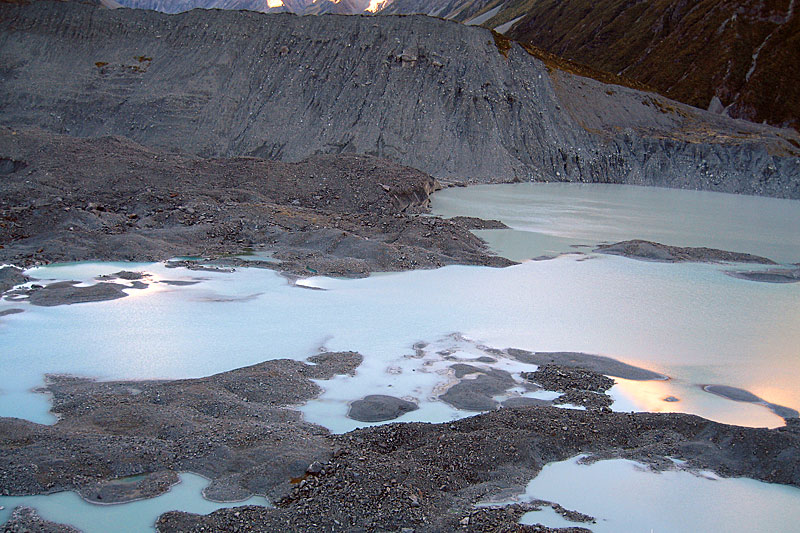 The snout of Mueller Glacier viewed from the Little Ice Moraine at Kea Point.
The mounds poking above the lake surface represent decaying stagnant glacier
ice that has been flooded as the glacier surface down-wastes. The left lateral
moraine is in the background with its steep furrowed slopes (March 2006).
| 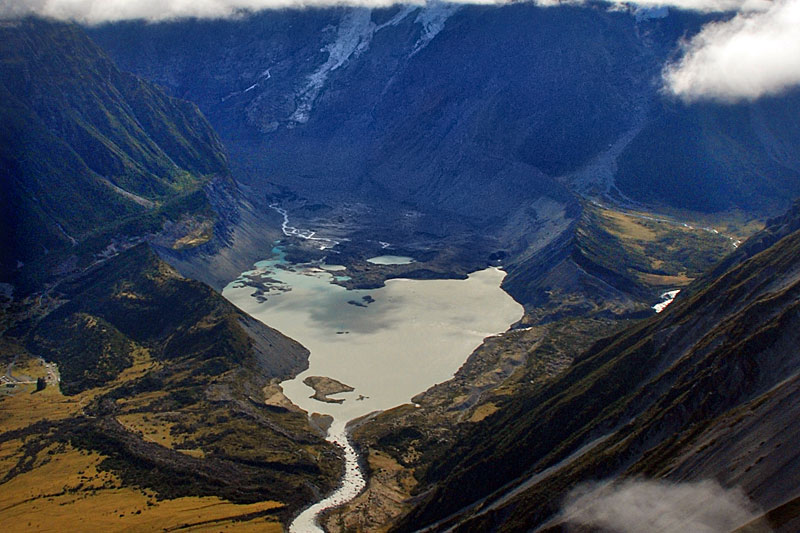 Aerial view of the moraine system, snout and proglacial lake of Mueller
Glacier. The tallest moraines are 140 m high and were formed during the Little
Ice Age. The stagnant nature of the glacier tongue is evident from irregular
decay of the ice surface and down-wasting below lake level. Note that there is a smaller older
moraine outside the main ridge (April 2008).
| 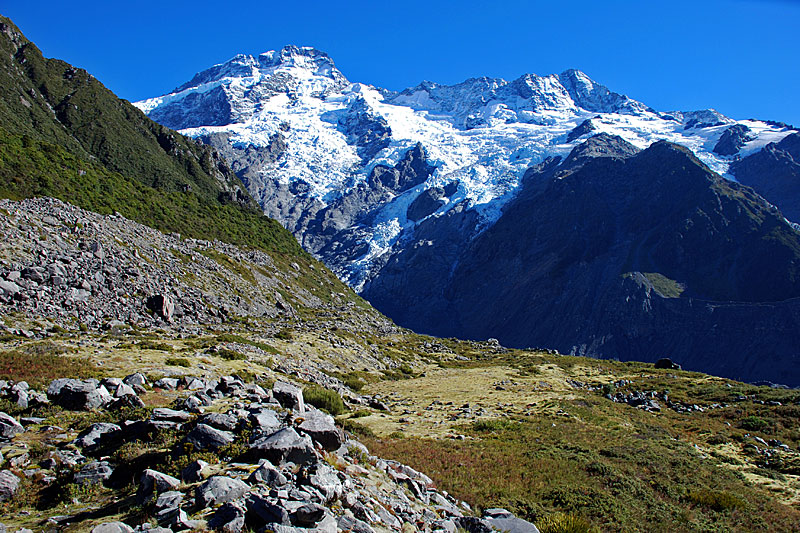 Terraces just below the crest of the true right-hand Little Ice Age moraine near
Kea Point viewpoint. It was at this point that the moraine was breached by an
outburst flood in 1913 that destroyed the old Hermitage Hotel. At this time the
ice surface was almost flush with the moraine; now it is some 140 m lower
(April 2008).
| 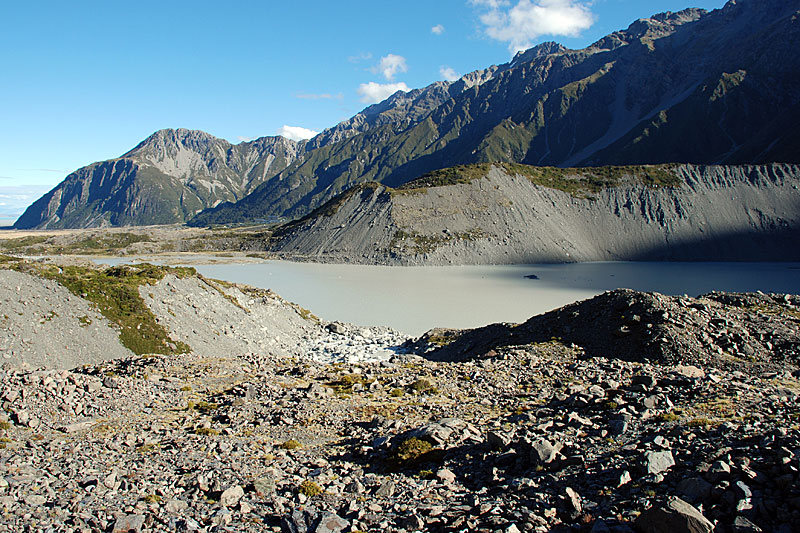 The Mueller Glacier lake viewed from the NE shore and looking towards the
right-lateral moraine, here known as White Horse Hill. Coarse angular to
subrounded moraine debris is evident in the foreground. In the left background
the lower slopes are dominated by alluvial fans (April 2007).
|
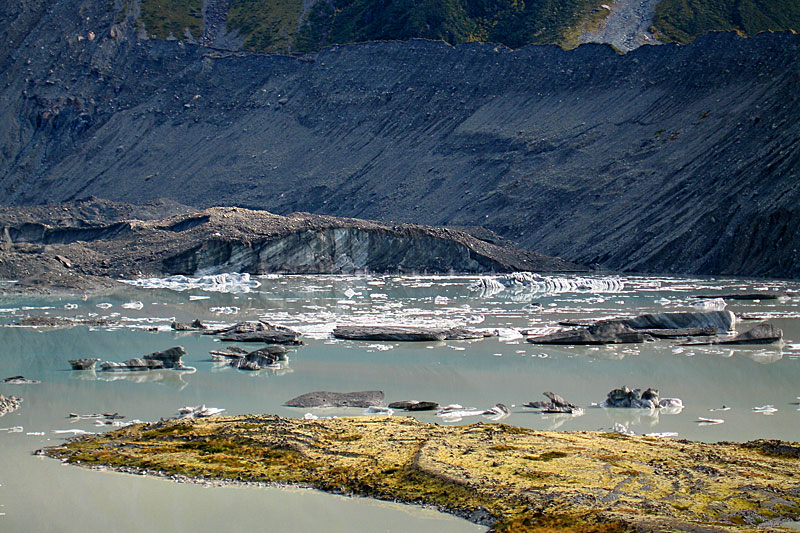 Telephoto view of the Mueller Glacier cliff from the lake shore, following a
recent calving event. The cliff displays part of a synclinal structure that is
typical of these glaciers. The unstable lateral left-lateral moraine slopes are in
the background (April 2007).
| 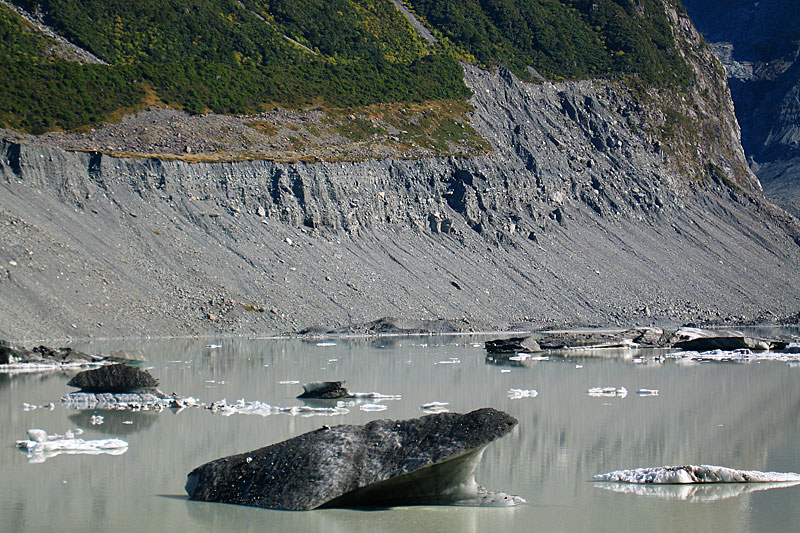 Telephoto view of the 1913 outburst flood breach at Kea Point. The flat area
above the moraine represents the zone where moraine debris was reworked by
the flood. Note the stratified nature of the moraine, formed as debris
progressively overtopped the moraine during the Little Ice Age advance (April 2007).
| 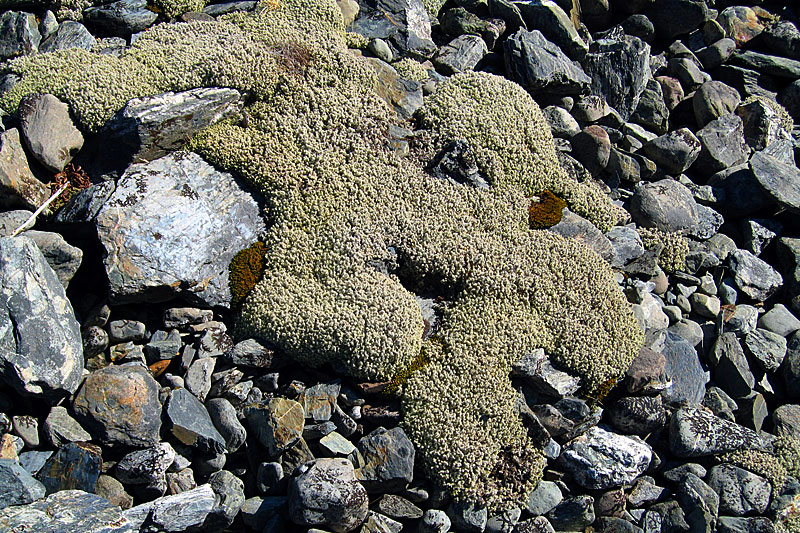 Early colonisation of freshly exposed moraine and glaciofluvial sediment is by
moss. The grey colour reflects a long period of dry weather (April 2007).
| 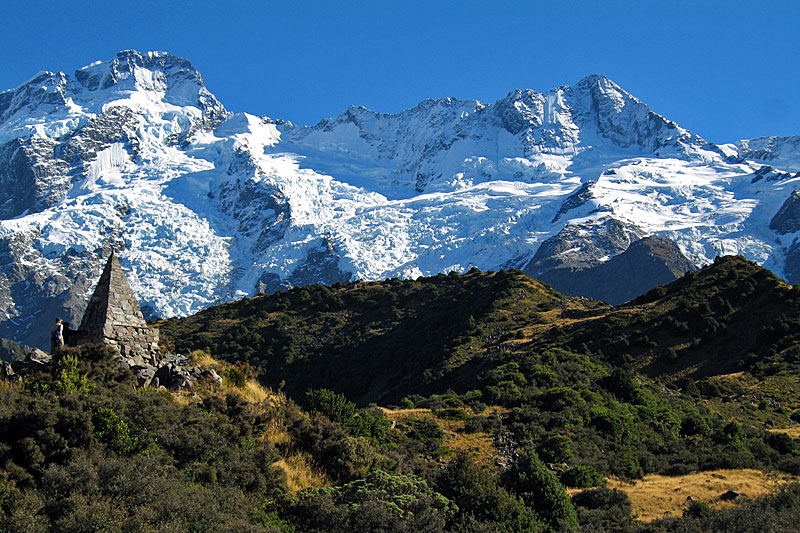 Whitehorse Hill (the Little Ice Age moraine) viewed from the Alpine
Memorial which commemorates the lives over 100 mountaineers who have
lost their lives on these mountains. Mount Sefton provides a fitting backdrop
(April 2007). |
|
Access to the glacier terminus is hazardous and challenging, owing to the instability
and steepness of the bounding moraines. However, it can be viewed from Kea Point, a
notch in the right-lateral Little Ice Age (18th century) moraine and reached by way of
a good path. The proglacial lake, small icebergs and the snout can easily be seen from
the NE shore of the lake. This is a relatively secluded spot, as the main path to Hooker
Glacier lies further SE, amongst the moraines. The bulk of the glacier is hidden from
view unless one is prepared to climb to Mueller Hut, near the crest of the Sealy
Range. Neither do the usual tourist flights pass over the glacier for views of its upper
reaches. These photographs was taken from the area around the snout and the
Little Ice Age moraines.
Photos Michael Hambrey.
|